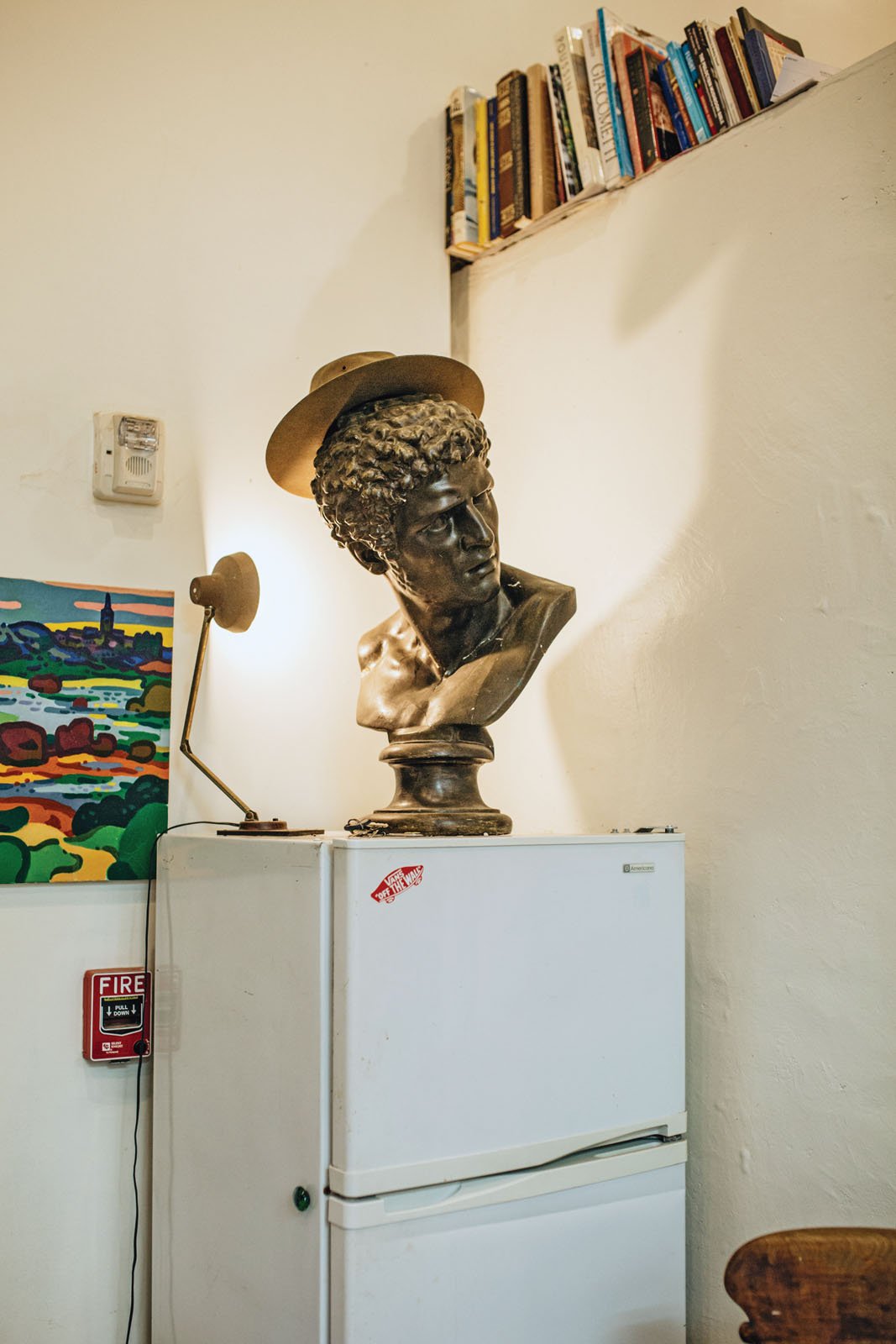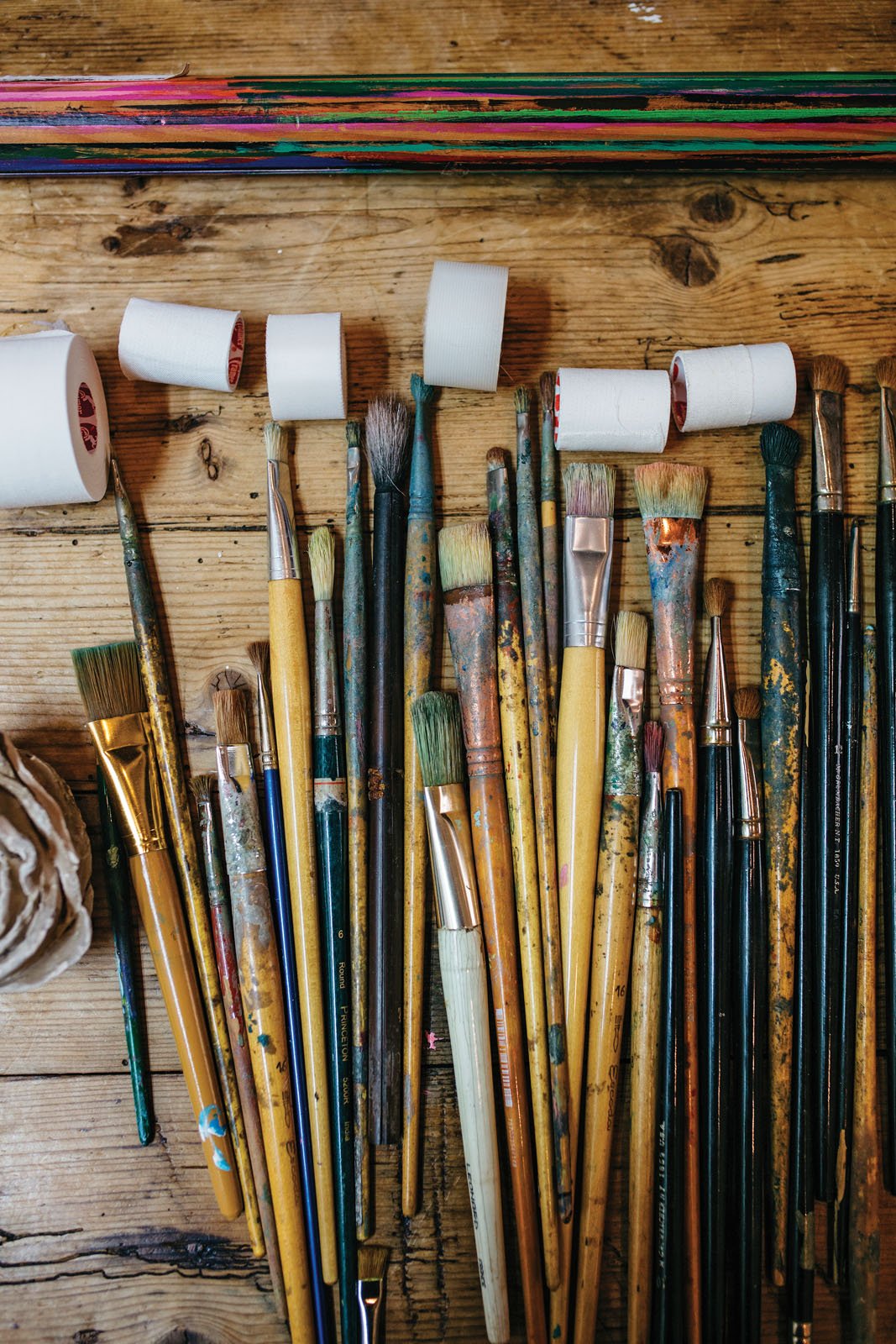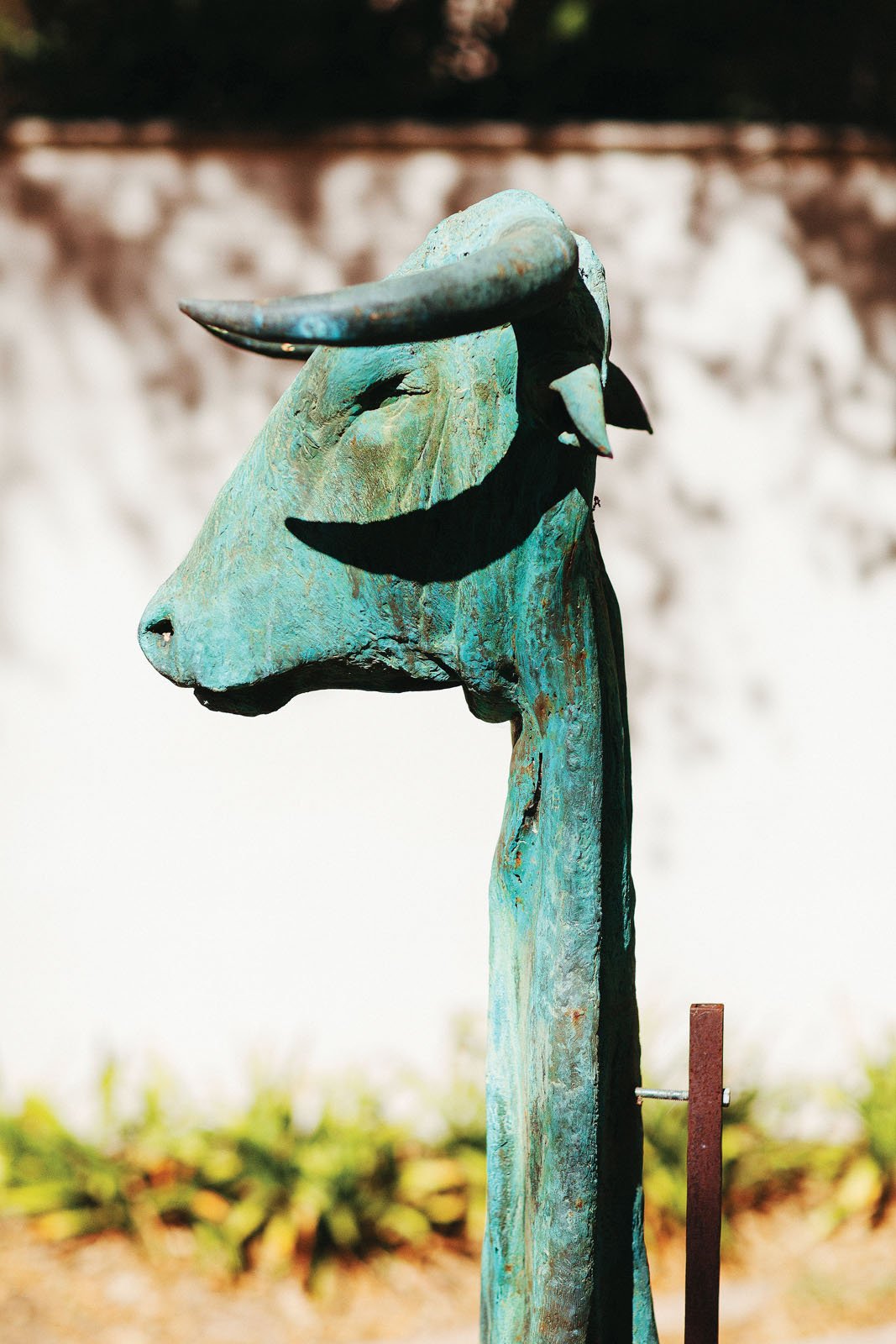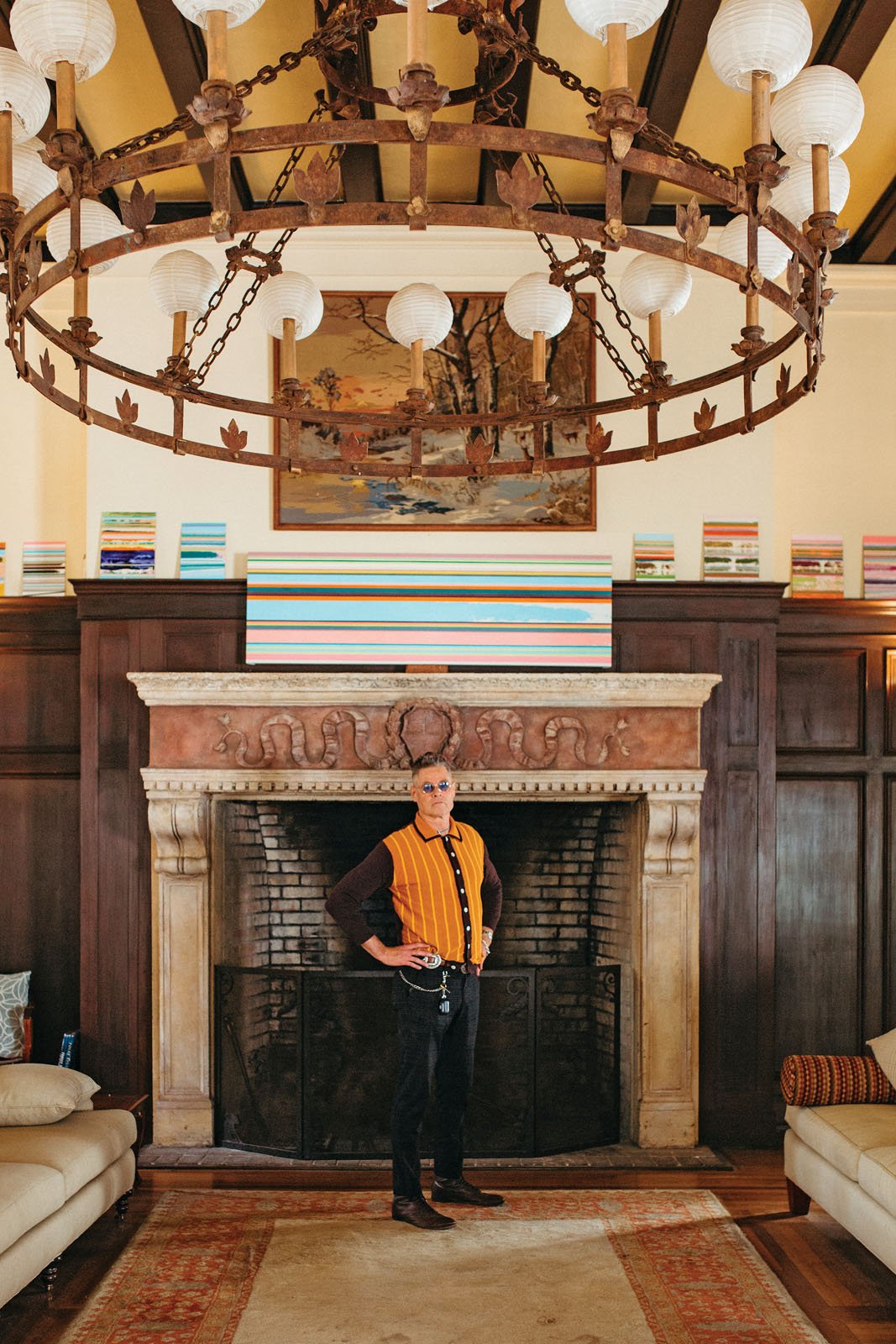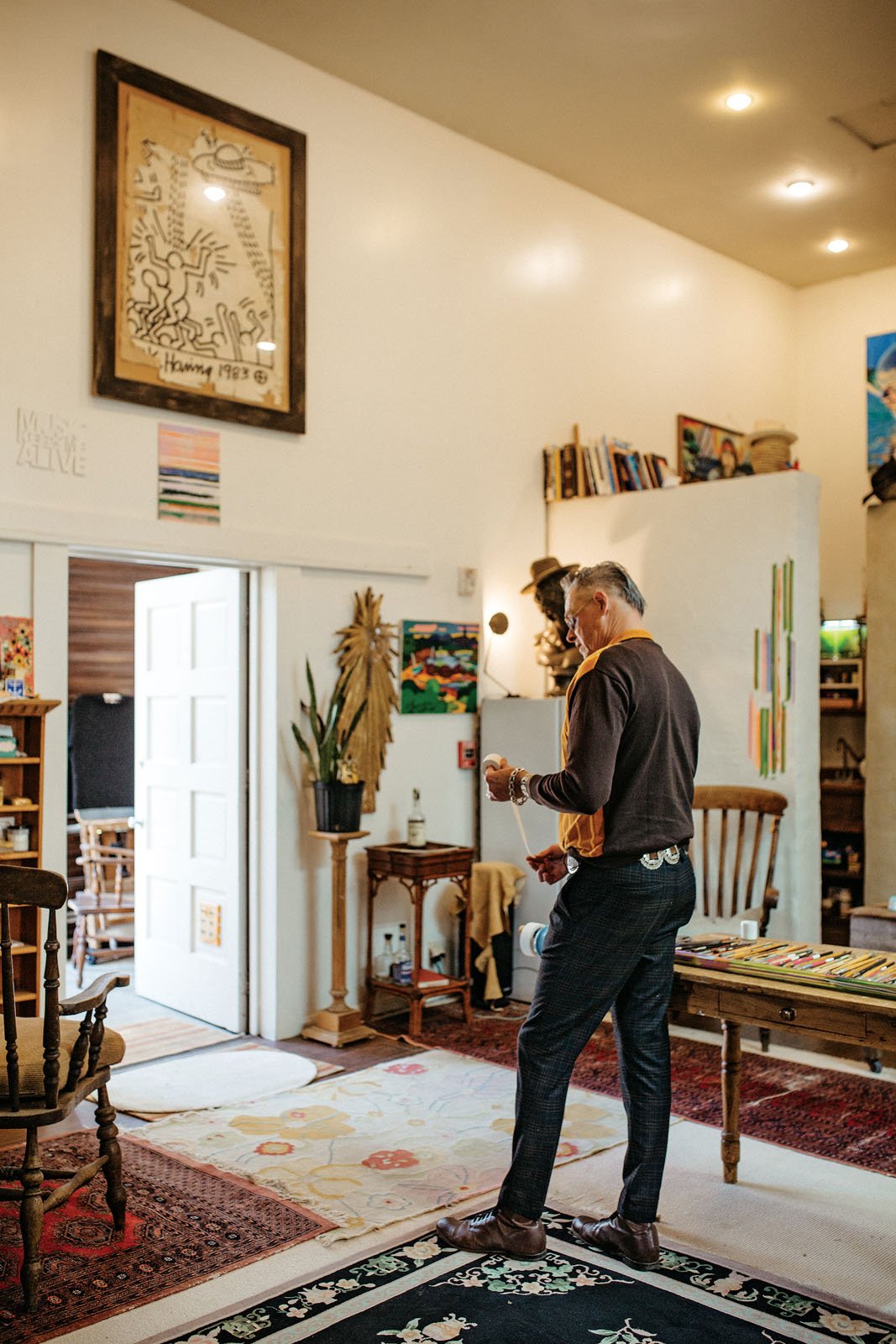King of the Coast
Artist STANLEY BOYDSTON captures the waves at Rincon through canvas, surf, and athletic tape
Written by Lorie Dewhirst Porter | Photographs by Sara Prince
Artist Stanley Boydston’s obsession with Rincon Point is as intense as any seasoned surfer’s. For several years, he has produced work based on the famous sets of parallel waves generated by the “Queen of the Coast,” a location coveted by surfers worldwide. But not everyone who views his paintings actually sees waves depicted in them. “When I say they’re wave sets at Rincon, [patrons] look at me like I’m speaking Greek,” says Elizabeth Gordon, whose eponymous gallery on Gutierrez Street in downtown Santa Barbara represents Boydston’s work, along with Chase Edwards Contemporary gallery in Bridgehampton and Palm Beach. “But that’s the neat point,” Gordon adds. “People’s impressions are all across the board.” In reality, the artist’s vibrantly hued canvases verge on abstraction, but upon careful examination telltale details—a horizon line, the frothy seafoam—emerge. Which is exactly how Boydston approaches his favorite subject: “I’m looking at the light, and I’m looking at the horizon, and I’m looking at the color relationship between the sky and the horizon. As abstract as these paintings get, I’ve seen that.”
Boydston’s color scheme comes straight out of the sixties. His penchant for pairing bright orange with dazzling pink stems from a childhood trip on Braniff Airways and his memory of female flight attendants clad in Italian designer Emilio Pucci’s avant-garde uniforms in eye-popping colors. Another influence was pop artist Peter Max, who specialized in psychedelic imagery painted in Day-Glo colors. “For me those colors were associated with something forbidden, because there were drugs involved and sexual awakenings involved,” the artist says. “I think that lingers in my art, the feeling that you’re doing something exciting.”
“When I say they’re wave sets at Rincon, [patrons] look at me like I’m speaking Greek”
An Oklahoma native and a member of the Cherokee Nation, Boydston, 62, followed a circuitous path to Santa Barbara that included a childhood in Dallas, a decade in Spain, and a year in New York. He was a self-proclaimed “juvenile delinquent,” but his grandmother gently directed him toward painting, which he studied at the University of Texas at Austin, only to drop out after reading artist Salvador Dalí’s book 50 Secrets of Magic Craftsmanship. “With those 50 secrets, I was more inspired than by what I was learning at Texas,” Boydston says. His parents, concerned by this turn of events, offered European travel and study as an alternative. He happily complied, and ended up living in Spain from 1980 to 1990, primarily in Madrid.
The years in Spain were productive. Fluent in Spanish—thanks to a beloved childhood family housekeeper from Acapulco—Boydston was in his element. “I made a point to learn as much as I could,” he says, “I started reading a lot and really got into French philosophy and German existentialism.” At the time Spain was still emerging from dictator Francisco Franco’s brutal regime, “and everyone was just blossoming.” Boydston became a regular at Madrid art openings, particularly exhibitions by Americans such as Robert Rauschenberg and Keith Haring, both of whom he met while there. He also began exhibiting his art there, primarily collages culled from newspapers, magazines, and street posters. An exhibition of Giuseppe Panza’s collection of conceptual art inspired Boydston in another direction, so he headed to New York for a year and focused on conceptual art and performance.
A romance with an opera singer led Boydston in 1993 to Santa Barbara, where he began painting landscape. The love affair ultimately failed, but Boydston discovered his cherished Rincon. At some point, he eliminated the curves from his compositions and began working exclusively with straight lines, using athletic tape for the waves. The tape reminds him of his father, who was a football player. (His mother was a beauty queen.) “Whenever I can use the athletic tape, there’s a joy in it,” he says.
In 2019, ten of Boydston’s Rincon-based works, entitled Creation/Emergence, were exhibited at the inaugural Biennale of Contemporary Sacred Art in Menton, France. This led to a special invitation to exhibit one of his paintings during the Venice Biennale. “It was just amazing,” he recalls, noting that the Venice experience was heightened by the discovery that his wife, Alicia Elizabeth, was pregnant with their son, Evan Star. (Boydston is also stepfather to daughters Violet Eve, 8, and Ava Love, 10.)
The quirky locale suits the artist, who says, "I just knew it was something special."
Given Boydston’s life experiences, it’s perhaps unsurprising that he managed to rent an outbuilding of a rambling old Montecito mansion for his art studio. The Palladian-style building with its majestic columns was evidently used as a “green room” for musicians who gave performances for the mansion’s owner. The quirky locale suits the artist, who says, “I just knew it was something special.” And the residence’s grand wood-paneled ballroom is a perfect venue for displaying his paintings.
Boydston continues to work on his wave paintings. “They’ll start out with a band of color,” he says, “and usually it’s orange. And then I’m basically weaving in and looking for my Rincon, within that.”





